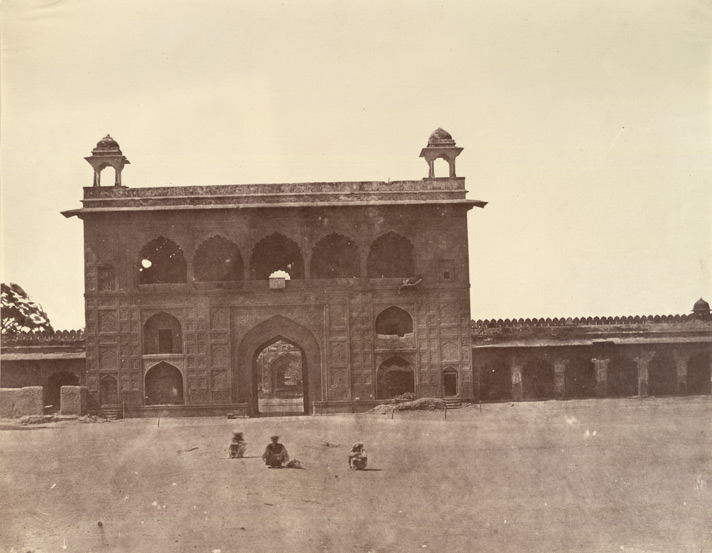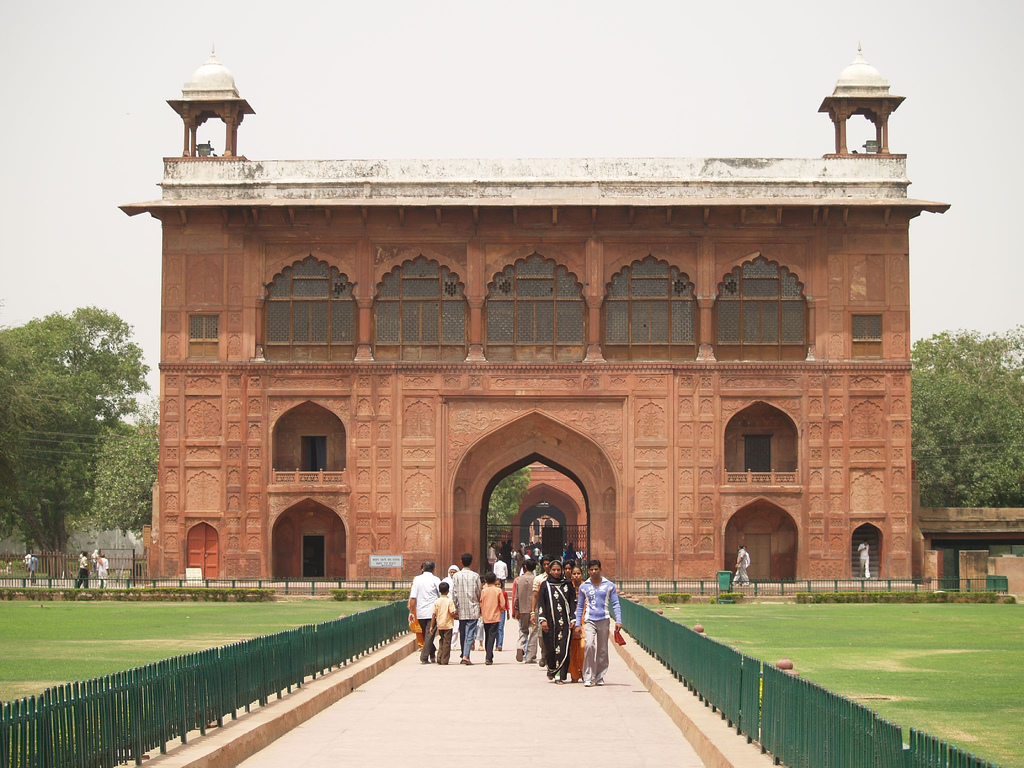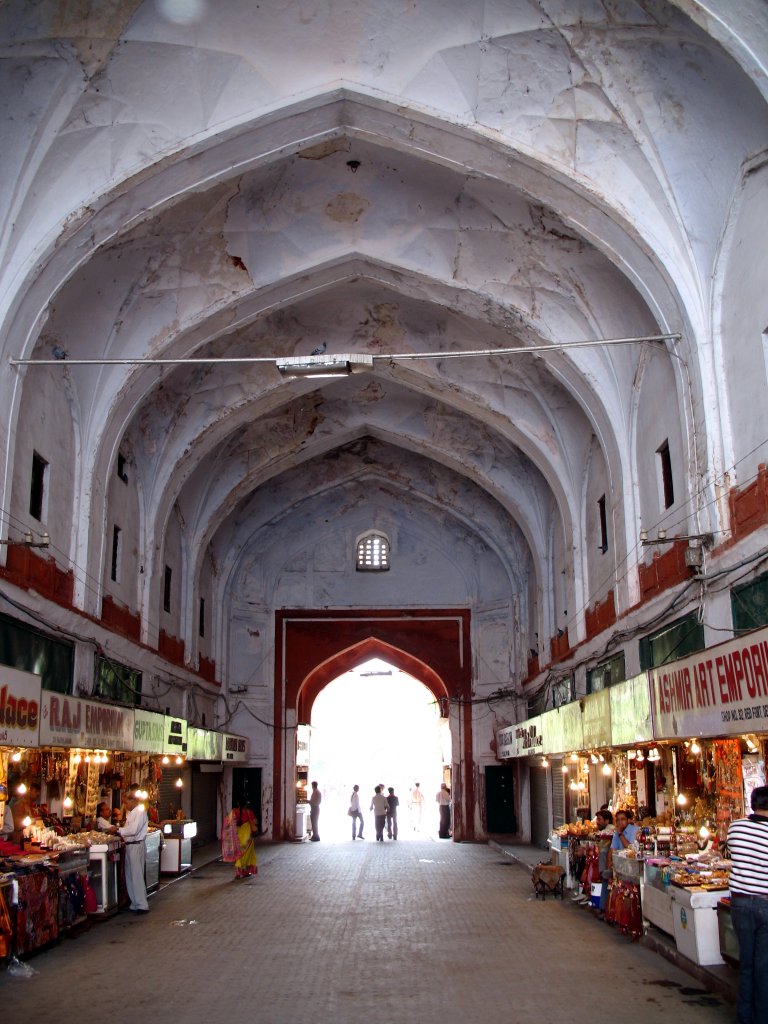

*Naqqar Khana ('Drum House'), from 'Amal-i Salih, Muhammad Salih Kanbu, 1700's* (BL)

*[Naqqar Khana] Inner Gateway of the Palace, Delhi; now powder magazine; a photo by John Murray, 1858* (BL)

The "naqqar-khanah" as it looks nowadays
Source: http://www.flickr.com/photos/mattlogelin/147548930/
(downloaded Sept. 2007)

Inside the Naqqar-khana: a fresco in a wall panel
Source: http://www.flickr.com/photos/mattlogelin/146745822/
(downloaded Sept. 2007)

The covered bazaar as it looks today
Source: http://www.flickr.com/photos/radziun/141361049/
(downloaded May 2007)
Passing through the covered bazaar of the Lahore Gate, the visitor entered a well-kept square about 200 feet long and 140 feet broad, surrounded by a range of arcade departments where, in olden days, the Omrahs had their quarters when on the King's guard. On the south-western corner of the square stood certain public buildings where the Emperor's Nazir transacted business. In the centre of the square was a tank, fed by a canal which divided the square into two equal parts; on either side of the canal was a wide road-way which followed the course of the canal from north to south: going northward to the royal gardens and southward to the Delhi Gate. In front of the tank and opposite the inner entrance of the Lahore Gate bazaar, within an enclosure of stone railing, stood the Nakar Khahah, or the Music Hall, a two-storeyed red-stone building, which, notwithstanding the alterations it has undergone to meet the exigencies of a military garrison, continues much the same as it was.
Neither the walls of this square, the tank, the public buildings, nor the stone railings of the Nakar Khanah are now in existence. Between the entrance of the bazaar and the Nakar Khanah the ground has been cleared and levelled, and there is nothing to mark the site of the buildings which once formed the right and left wings of the Music Hall of Shah Jahan. Five times a day the Royal band used to strike up in this lofty Hall; on Sundays the music was kept up almost the whole day, "because it was a day sacred to the sun"; and the same honour was paid to the day of the week on which the King was born. Bernier, who was "stunned" by the noise and found it unbearable at first, at last grew accustomed to "the royal music" and discovered grandeur, solemnity, and even melody in it.
--Carr Stephen, Archaeology and Monumental Remains of Delhi (Author,
1876), p. 220
== Indian Routes index == Indian Routes sitemap == Glossary == FWP's main page ==